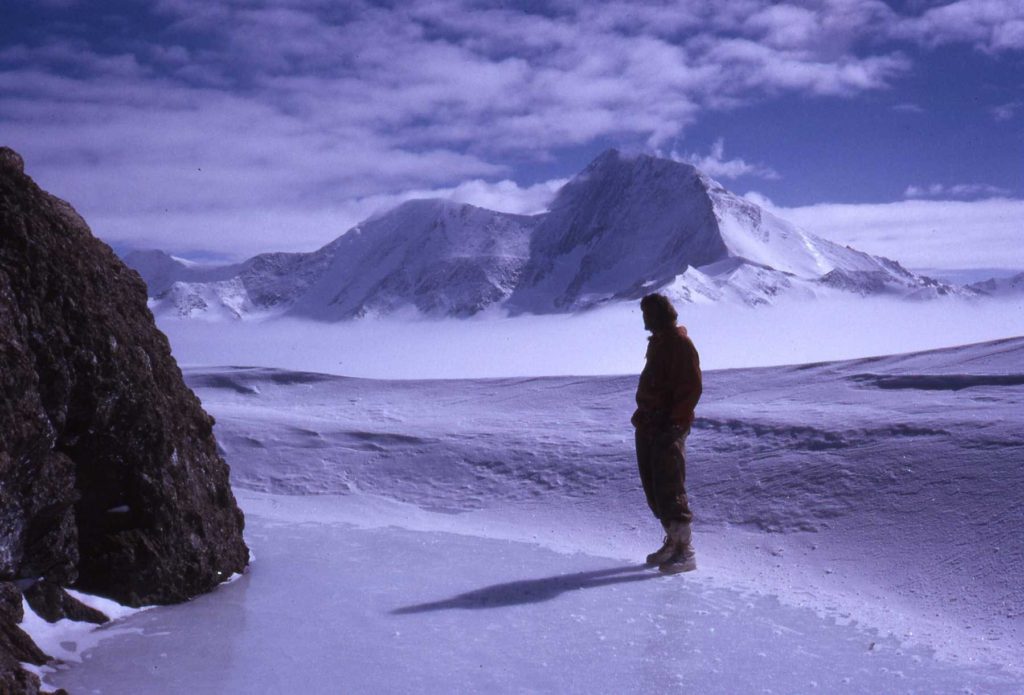The Stonington Fossil Scandal (continued)

Towards the end of our main 1972/73 summer trip to the east coast of Palmer Land we met up with Sledge Lima (Mick Pawley, BC and GA and John Yates, surveyor) who had been working at station Cairo to the south of our position. They handed me some fossils and other rocks (mentioned to me previously on the radio by Mick) which they said had been found in the Cairo area. At the time I thought fossils were a bit odd given what I knew about the geology of the east coast area. However, keeping an open mind I said I was very interested and would include the area in my plans for extending the geology mapping next summer. Nothing more was thought about it. I took the rock specimens back to base and handed them to the outgoing geologist, Bob Wyeth for transfer back to Birmingham University where the earth scientists were based at the time.
The rest of the story is told by the following dated telex messages (no internet in those days!).The
words are as they were originally typed. I still have the original copies albeit a bit faded:
29/6/73 – From London HQ to Stonington:
“ From Adie. Three rock specimens collected by surveyors at survey station Cairo have now arrived
in Birmingham via Singleton and Wyeth. These appear to be of considerable importance but they
cannot be used without further field information, including relationship between the collecting site.
Could you please let us have all available data on these specimens asap.”
16/7/73 – From Singleton at Stonington to Wyeth UK home address:
“Informed this winter fossiliferous sediment sample taken Cairo actually brought from Fossil Bluff.
Other two genuine. Please inform discretely soonest. Have received telex requesting further field
info on specimens.”
23/7/73 – From Adie HQ to Singleton:
“Pity no field information on Cairo survey station specimens but will proceed with publication of this important data quoting collector name.”
At this point I was getting concerned about my future reputation especially as I was only just starting out as a geologist. I therefore had a chat with my new base commander, Steve Wormald which resulted in the following telex being sent:
24/7/73 – From Wormald (BC) to BAS HQ:
“ Cairo rock specimens. Since receiving first enquiry on these specimens and the subsequent reply being sent, facts arose which I considered to necessitate a full enquiry and statement. I cannot believe that this exchange would be continuing via official channels if these facts were known in the UK.
On the 13th January 1973, sledge Lima (Yates and Pawley) handed to Singleton at his camp, two igneous specimens and one fossiliferous specimen. These were said to have been taken from Cairo survey station. Pawley had previously informed Singleton by radio that fossiliferous specimens had been found by them at Cairo survey station.
Singleton passed this fact by radio to Willey (geologist on Alexander Island) knowing of Willey’s interest in belemnites, some of which were contained in the fossil specimen. Singleton stated at the time to Willey that, given time at the end of this 1973/74 season, he would try to visit Cairo and obtain further data.
At Stonington, the specimens were handed over to Wyeth, for return to Birmingham.
Shortly before receipt of Dr Adie’s enquiry, Singleton was apparently examining maps of the Beaumont/Gruening area, to which both he and Butler (geophysicist) had thought of visiting if possible if time allowed to obtain further data. Yates, on being asked to point out the exact situation of Cairo, remarked that surely Singleton was aware of the fossil specimen being taken from Fossil Bluff. Singleton was not aware of this, but Yates was “almost certain” that both Wyeth and McNaughton (outgoing geophysicist) were made aware of the fact at relief, and nothing further was thought of the matter as Wyeth had them in his case and was assumed to have removed the offending specimen.
It now appears that, unless this “joke” is being irresponsibly extended, the facts are not known, as Singleton feels that neither of the genuine specimens were, at first inspection, important enough to warrant any publication. Ends“
14/8/73 – From Sir Vivian Fuchs, BAS HQ to Stonington:
“ You may set Singleton’s mind at rest as the situation is understood. Unfortunately jokes of this kind sometimes misfire and can lead to real errors as was implied by Adie indicating that he might publish. Jokes and science seem ill bed fellows. Singleton is not held responsible. “
This final message from Fuchs was a great relief and I could finally put this matter to bed. Obviously I had been set up hook line and sinker by a number of individuals on base and unfortunately in this instance it escalated right to the very top in BAS HQ. A lesson learned I think. I imagine the way this joke developed is fairly unique in BAS history of science but entertaining none the less.
Dave Singleton (Geologist 1972 – 1973)
